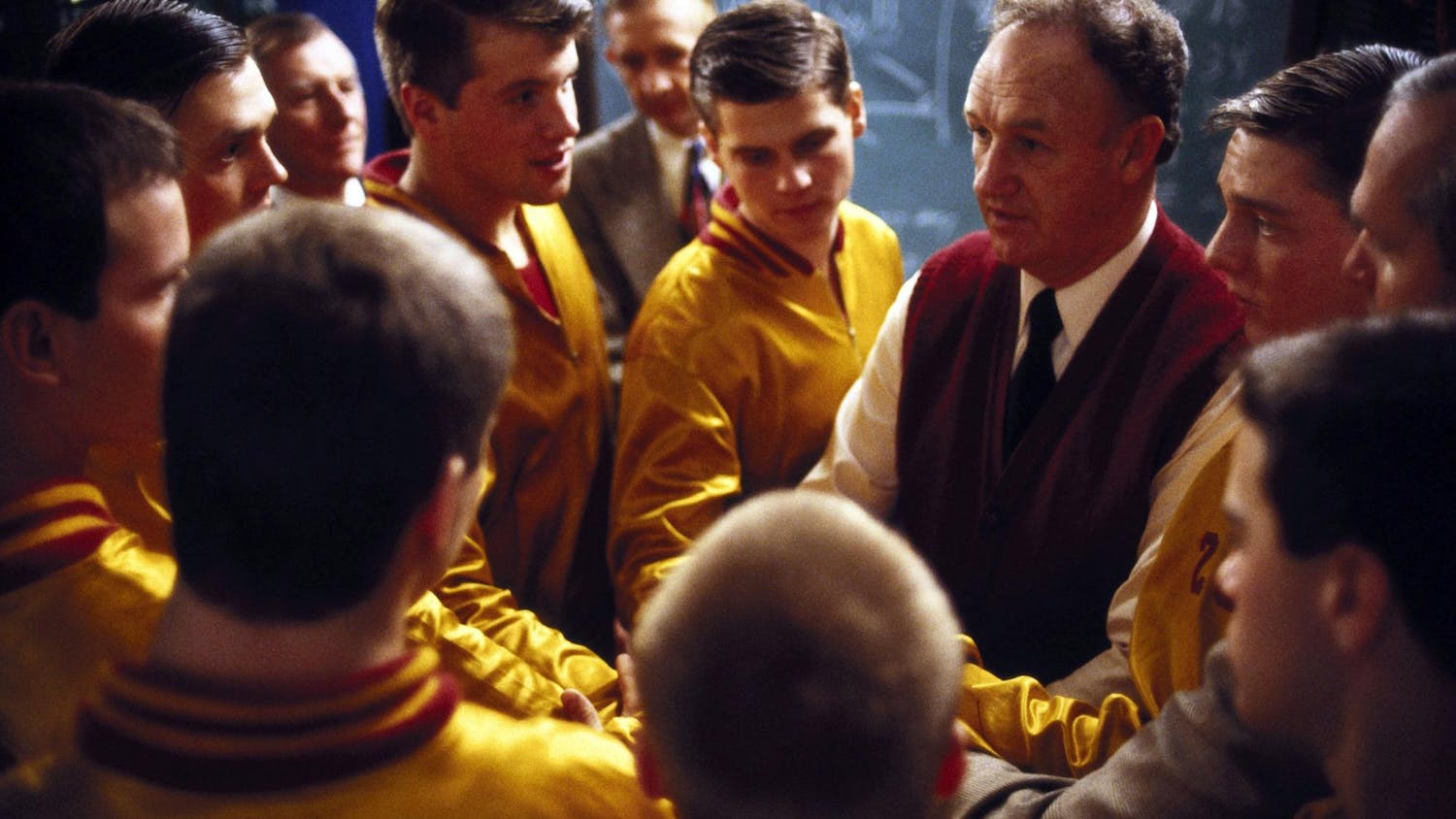Professor Howard Jensen has waited thirty years for this Friday night. On that evening, the IU Theatre production of Arthur Miller's "Death of A Salesman," which Jensen directed, will open the new Ruth N. Halls Theatre at the new Theatre and Drama Center.\nHired in 1972 and having served 27 years as head of acting and directing at IU, Jensen has directed here and regionally for much of his career but has never, as a director, tackled the play that many consider to be the greatest American dramatic work.\nBut that is not to say that the play and the director do not have a history that will culminate in this weekend's opening. \n"'Death of a Salesman' was the first play I ever read -- it was the first play I ever bought. Obviously it made a great impression; it blew me away," said Jensen, who for many years would not have touched the play. "I came back to Death of a Salesman maybe five, six years ago and realized what it was that hit me when I first read it. It is indeed a genuine American classic; and I think while a lot of other Miller plays have not retained their popularity, this one still is and seems to get at something universal."\nIt is that universality that has seen the play produced in numerous countries, translated into dozens of languages and even adapted on Broadway in 1999 starring Brian Dennehy, who won a Tony Award for his portrayal of Willy Loman.\n"I'm just amazed at the number of people I've talked to who come right out and say, 'This is a very painful play. It's just like my family; it reminds me of my father,'" Jensen said. "While I think he was writing a critique of the dark side of the American dream, it's a family thing that keeps the play in the repertory."\nThe aspect of the family is also something that touched graduate student Erik Anderson, who will play Willy Loman in this production as his thesis role in conjunction with a master's degree in acting.\n"I think it's important because it's a story that on any level any American can relate to," Anderson said. "I'd like to believe that this is a play that when people leave the theater, they might appreciate (their) families even more."\nAnderson's work as Willy Loman was not originally the idea for the casting of the role. Miller was attempting to merge the idea of a tragic figure who was a normal man or 'low man' with that of the Aristotelian notion of a tragic hero. Willy Loman is arguably the most difficult American-made role, and is not easily attempted by any actor.\n"When I proposed this play, I wanted to have assurance that a professional actor would come in and do it," Jensen said. "Well, then as time went on and I saw (Anderson's) work and how he was progressing, and when I went through the (professional) actors I personally knew that I thought we could get here and who would come for a longer period of time, I realized that I had the best actor here with (Anderson)."\nAnderson, who was originally slated to play the role of Biff Loman (Willy's son), has now come to embrace the role.\n"Looking back, I was really uncomfortable being cast in this role. Now, I wouldn't want any other role for my thesis even though it still scares me to death a bit," Anderson said.\n"Death of a Salesman" concerns many ideas. It merges theatrics and expressionism on the stage with realism, takes on the facets of the American dream and critiques post-World War II generational issues, but in the end it deconstructs the American family.\nIn the play, salesman Willy Loman is nearing the end of his career but cannot reconcile the fact that he is not a success and that his house and his investments (a refrigerator and a car) are not yet paid off and are now falling apart -- just as he is. His children, now grown, have also not lived up to his ideals, and throughout the play he is forced to face the values he embued versus the changing face of the American dream.\nBecause the play is realistic but with a foot embedded in theatricality, graduate student and set designer Mark Smith, whose design will serve as his master's thesis, had a great challenge before him.\nOriginally, it was Miller's intention to have the play take place in a set that was the inside of Willy's head -- hence the play's original title "The Inside of His Head." Though that idea faded away, the notion of the play taking place in Willy's mind has not.\n"Our setting still reflects the inside of Loman\'s mind -- the claustrophobia of being boxed in by his surroundings and the paranoia not being able to keep up with a world that keeps changing," Smith said. "The audience should see the world the way Willy Loman sees it. But the issues in the play are very real, particularly today, so it is important not to create a setting that is detached from reality."\nBecause the show is being done in the state-of-the-art Ruth N. Halls Theatre, it affords many new technical capabilities, including its height, which Smith said is utilized in this design.\nThe use of the new theater is also something Jensen has been awaiting for a long time, and for him, though memories of the University Theatre are fond, it was well worth the wait.\n"A lot of people have been very fond of the theater over there -- and I am too -- but I've been in the slums for 30 years," Jensen said. "There were days when it got really hard to come and teach because of the dark, dirty, stinky rooms -- so yeah, this is joyous. Walking into that new space was wonderful."\n"Death of a Salesman" will play at the Ruth N. Halls Theatre March 22, 23 and 24-30 at 8 p.m. Tickets are $15 and are available at the IU Auditorium Box Office.
American classic 'sells' new theater
"Death of a Salesman" opens new Ruth N. Halls Theatre, takes advantage of space
Get stories like this in your inbox
Subscribe





